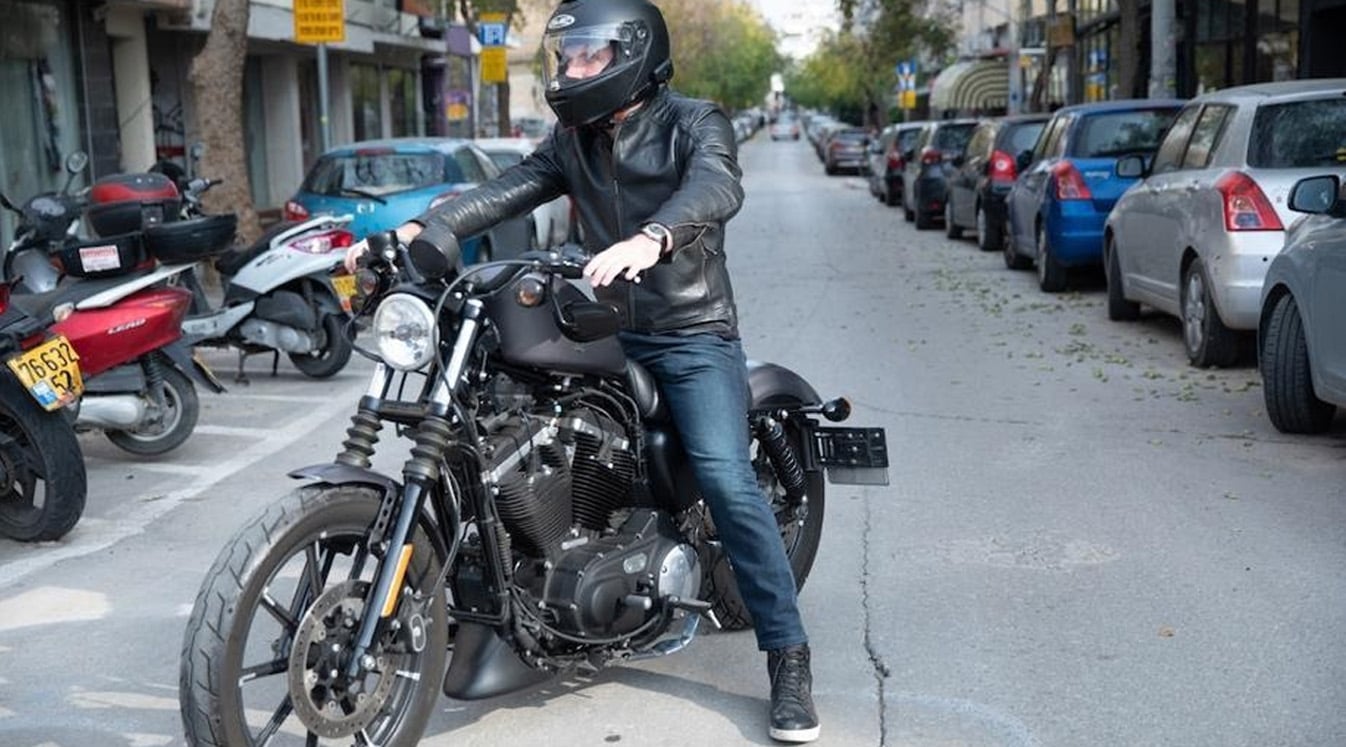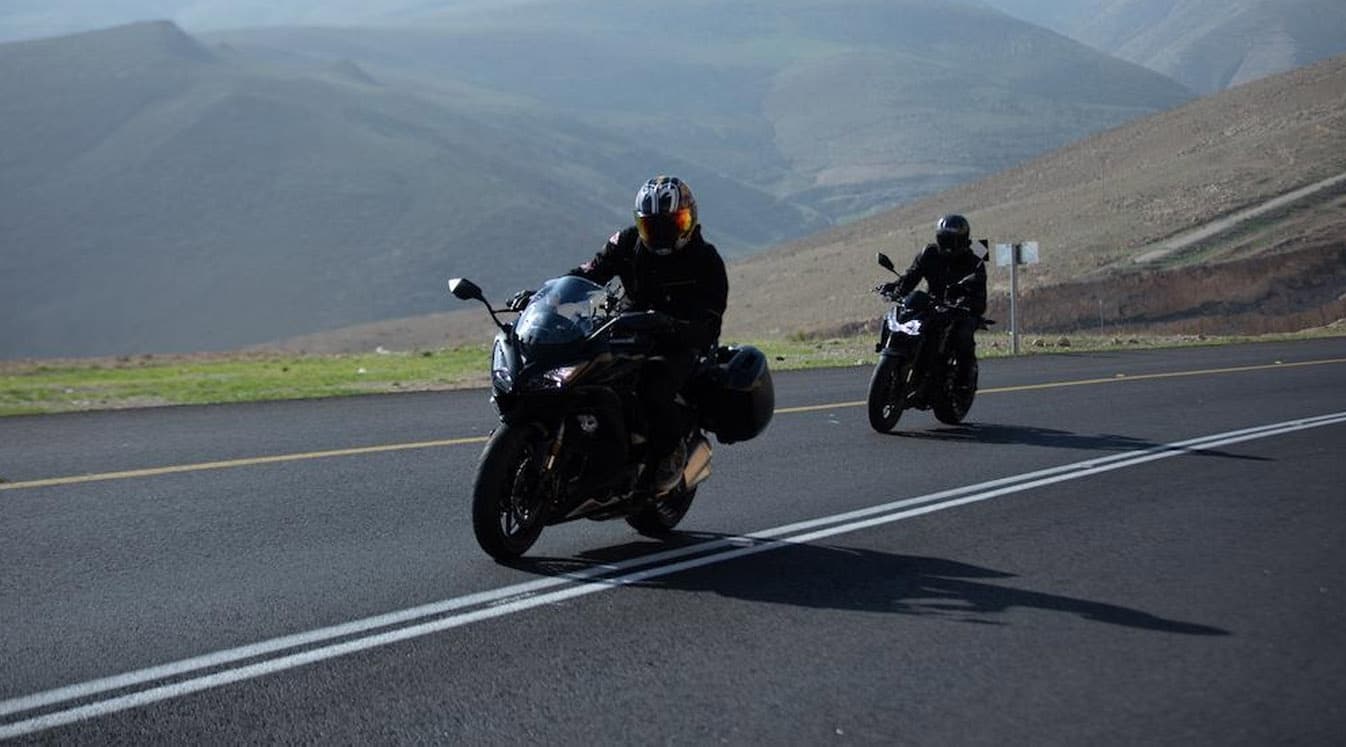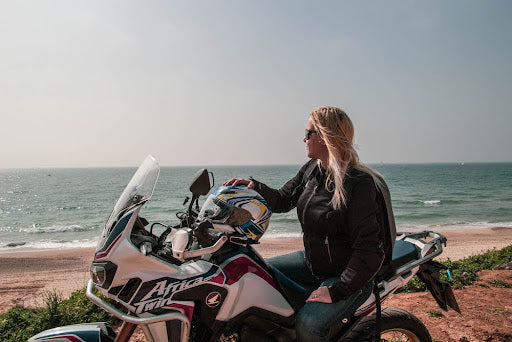Buying your first bike is an experience you’ll never forget, and trust us when we say that just about every motorcycle nut wishes they could go back in time to the day they bought theirs. That’s because it offers an experience unlike any other—the freedom and pleasure of realizing that, for the first time, the sweet-looking speed machine in front of you is all yours.
Of course, some of those old-timers might also tell you that if they could do it all again, there are a few rookie mistakes they would be sure to avoid. These nine tips from the motorcycle lovers at Cardo Systems will help you select the motorcycle that’s just right for your lifestyle and make your first bike memorable for all the right reasons.
1. Know the basic types of motorcycles, and decide which one is right for you.
There are tons of different types of motorcycles out there, and each is good for a different type of rider and a different type of riding. Although not all bikes fit neatly into one style or another, you should have a general idea of what type you’re looking for before you start shopping:
- Sport Bikes: If you’ve got the need for speed, sport bikes might be your thing. These light and ultra-fast motorcycles are designed for power and handling on the track, but more powerful models can be a lot to handle for a new rider.
- Cruiser Bikes: Cruisers are the iconic “chopper” style bikes that many people imagine when they think of motorcycles. They tend to be larger, heavier and built for long-haul comfort rather than speed.
- Naked Bikes: A style that’s recently experienced a surge in popularity, naked bikes split the difference between sport and cruiser bikes while offering an upright riding style that’s great for beginners.
- Cafe Racers: Small, fast and light, cafe racers are designed after mid-20th century European motorcycles. Their superior handling makes them great for short rides at high speed, and their classic, minimal styling makes them a hit among younger riders.
- Touring Bikes: For those who are truly about living on the open road, touring motorcycles are where it’s at. These bikes are typically among the largest and heaviest you’ll find, giving them a smooth ride but making them potentially tough for beginners.
- Off-Road Bikes: Also known as dirt bikes, these bikes feature tall suspensions and knobby tires for performance on dirt, gravel and mud. Generally, they’re not designed for road riding and are towed to their destination in a trailer.
- Adventure Bikes: Halfway between a motorcycle and an off-road bike, adventure bikes are perfect for the rider who loves off-roading as much as they do conventional riding.
The only “right” motorcycle is one that feels great under you and matches the needs of your lifestyle. To find that bike, there are a few key questions to think about first.
2. Consider when, how and where you’ll be riding.
To find the motorcycle that suits you best, you’ll need to think about what you want out of riding in general. Think about the key characteristics you’ll look for in a bike by asking questions such as:
- Do you want to ride your bike as part of your daily commute? Many commuter riders choose agile bikes with smaller engines that get excellent gas mileage.
- Do you want to test your skills on a track? A bike built for sensitive handling such as a sport bike or cafe racer might be what you’re looking for.
- Do you want to take your bike on long road trips? Look into bikes built for long-haul comfort and extra cargo capacity such as cruisers and touring bikes.
- Will you be riding mostly on urban streets, rural roads or a mix of both? Urban riders typically favor smaller, lighter bikes for navigating traffic, while rural riders may opt either for something a little bigger or for an adventure bike that can tackle dirt and gravel roads.
Of course, there can be plenty of other factors in play as well. You might simply like the look of one style of bike over another, or you may have some loyalty to a particular brand. It’s most important to have a clear idea of what you want from your bike so that you can decide which trade-offs you can accept and which factors will be most important to your decision.
3. Research is your friend.
It’s a good idea to go into the buying process with a list of models you’re interested in and features you’re looking for. Do some digging on the Internet to learn about the reputations of different brands and models, including which are known to be reliable and good for beginners. There are plenty of great guides available online to help you sort out the differences between brands and models, as well as to help make sense of the complex performance specs you might encounter.
Your friends who ride motorcycles are a priceless resource here, so make sure to ask for their opinions and learn in detail about what they like about various models–and don’t be afraid to ask them to come along when you make your purchase. Motorcycle forums and social media groups are also often rich with information, and many seasoned riders are eager to share their experiences with new riders. (As always, take anything an anonymous stranger on the Internet tells you with a grain of salt.)
You should use the Kelley Blue Book as your go-to standard for motorcycle valuation, much as you would with a car or truck. The Blue Book value will give you a good idea of what you can expect to pay for models you’re interested in, as well as what a dealership might give you in trade-in value. Prices at a dealership or from a private seller may vary, but you can use the KBB value as a starting point and a negotiating tool.
4. Make sure the bike is a comfortable fit for your body.
Your body has a much closer relationship with a motorcycle than it does with a car or truck. A motorcycle needs to be comfortable for your particular body shape, so spend some time sitting on the bike and feeling out its height and weight. Due to liability issues, you may not always be able to test drive a motorcycle (particularly if you’re buying it from a private seller), but you can at least get an idea of whether or not the bike is comfortable to sit on.
Seat height and saddle shape are particularly important, as these features are usually hard to change without significantly modifying the bike. Newer riders will usually want a bike with a low enough saddle that they can plant both feet flat on the ground at a stoplight. Even motorcycle styles with higher suspensions such as sport bikes have beginner-focused models that often include lower seats.
It’s also key to get a bike that’s not too heavy for you. Many cruisers and touring bikes are on the heavy side, making them potentially tougher to handle for beginners and easier to drop. And while any experienced rider will tell you that dropping a bike is something that will happen to you eventually, no matter your skill level, it’s really helpful to have a bike that you feel confident handling.
5. You don’t have to go all-out on power.
Many motorcyclists encourage novices to start on a bike with a smaller, lower-displacement engine anywhere from 250cc to 600cc in size. While it’s not necessarily the one and only way to do it, starting small has a few advantages, including:
- You’ll often save money by opting for a bike with a smaller engine.
- Smaller-engine, lower-displacement bikes are typically easier to handle.
- Learning to ride on a less powerful bike will encourage you to learn proper technique before you step up to something more muscular.
- Smaller bikes’ lower price point makes them easier to sell when you’re ready to trade up to something more powerful.
- Since you’ll likely be riding at lower speeds than a seasoned pro, it’s helpful to have a bike that’s designed for great performance at lower power levels rather than an overpowered bike that always seems to want to go faster.
You’ll find plenty of popular beginner models in this size range, such as the Honda Rebel 300, Kawasaki Ninja 300, Yamaha V-Star 250 Cruiser and many more. These beginner bikes offer a great starting point for your research.
6. Make sure the motorcycle’s paperwork is in order.
If you’re buying a used motorcycle, you’ll need to do a little extra due diligence on your paperwork, particularly if you’re buying a bike directly from its owner. Take the time to ensure that all of the bike’s essential paperwork is squared away, including:
- Make sure the seller can present you with a title and that the Vehicle Identification Number (VIN) on the bike matches the VIN on the title.
- Write up a bill of sale and make sure that you and the seller both sign and date it. (You can find easy-to-use motorcycle bill of sale templates online.)
- Check with your state DMV to ensure that the motorcycle is legally registered to the seller. Be wary of anyone selling a bike that isn’t registered in their name, as the bike might be stolen.
- Use your state DMV’s website or another VIN search engine to ensure that the motorcycle has no liens against it from creditors and that its title is not a salvage title.
If a private seller seems evasive about the bike’s history and records, stay on the safe side and move on. You don’t want the hassle and risk of buying a bike that may get you tied up in legal troubles when you try to register it, or one that’s been previously wrecked and is no longer safe to ride.
7. Don’t skimp on the gear.
Buying your first bike is the perfect time to make sure you’re equipped with all of the gear you need to ride safely. That includes:
- DOT-approved motorcycle helmet
- Riding jacket
- Riding pants
- Riding boots
- Riding goggles
- Riding gloves
Because you’re trusting this gear with your life, it’s often better to buy it at a store where you can try it on. If you do buy your gear online, don’t be afraid to return something that doesn’t fit quite right. It might be a hassle, but you’ll thank yourself later when you’re riding in gear that’s comfortable and fits correctly.
In addition, a motorcycle helmet communication system can be helpful and fun for keeping up with your buddies on group rides. Grab one with Bluetooth helmet speakers, like the Cardo Packtalk Pro or Cardo Freecom 4+, to experience the joy of your favorite music in HD while you ride.
8. Get your new baby tuned up.
Once you’ve made your purchase, it’s always a good idea to invest in a tune-up for your new bike. You’ll want to develop a relationship with a trusted motorcycle mechanic, so now is the perfect time to find a shop you like. Ask your rider friends to recommend mechanics they trust or look up reviews online to find a great mechanic.
A good motorcycle tune-up should include an oil change, plus a check of other fluid levels and brake pads. It’s also a good time to ask the mechanic any lingering questions you have about the bike mechanically—although hopefully, you’ve gotten clarification on any major points before making the final purchase.
9. Insurance is a must.
Remember that you’ll need a motorcycle insurance policy on your new bike before you take it out on the road. Most major auto insurance companies also offer motorcycle insurance, so you may be able to find a great policy through the same company that ensures your primary vehicle.
Motorcycle insurance policies cover most of the same things that typical automobile policies do. At the baseline level, that will include liability insurance for bodily injury and property damage, but it can also be a good idea to get collision insurance that will help repair or replace your bike and/or underinsured motorist insurance that will protect you against drivers who aren’t carrying a sufficient insurance policy.
Closing Thoughts
At times, buying your first motorcycle can be an intimidating process—and like any great ride, sometimes you’ll have to navigate the twists and turns. Remember that at the end of that road is the beginning of another one: your journey as a motorcyclist!





